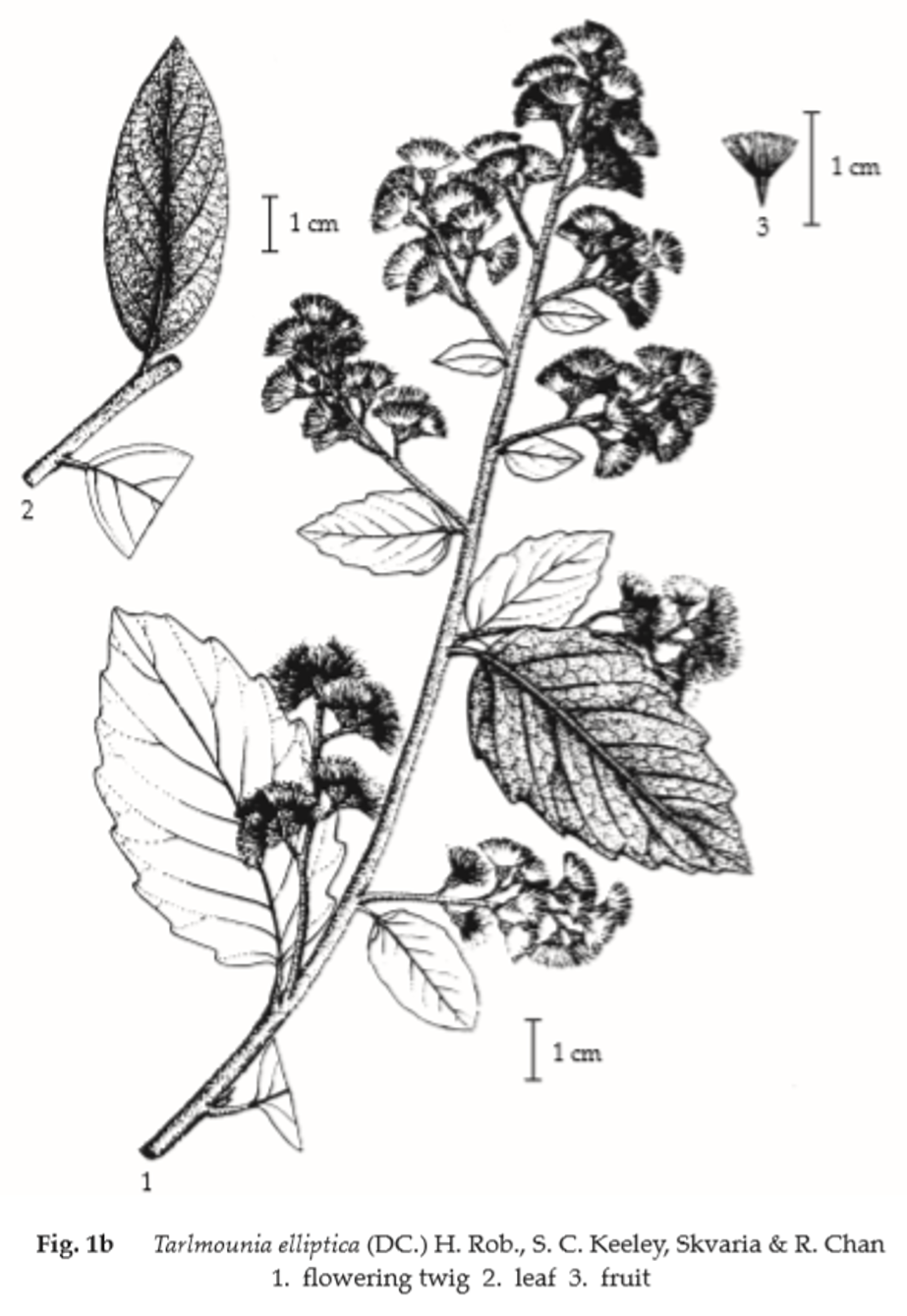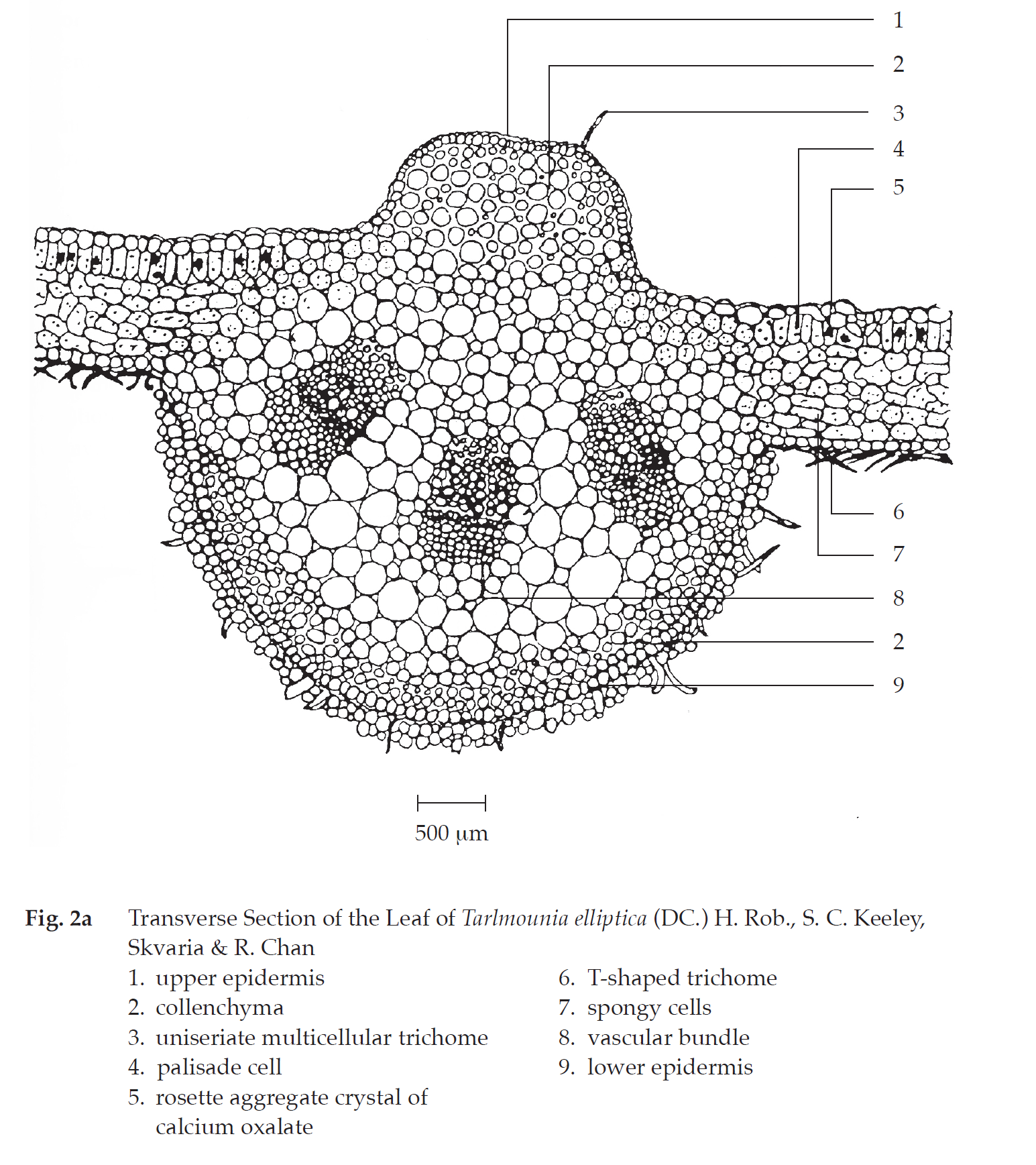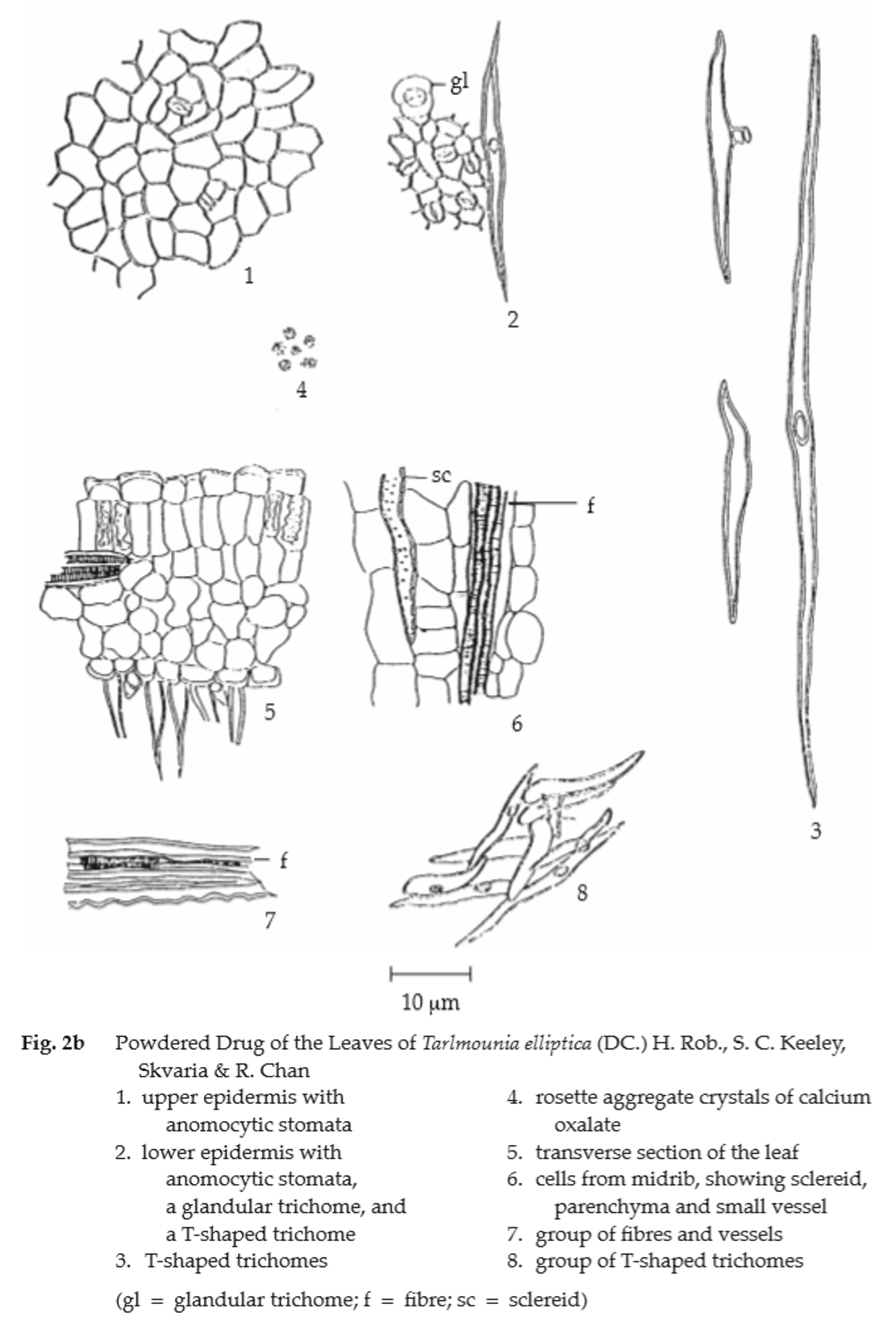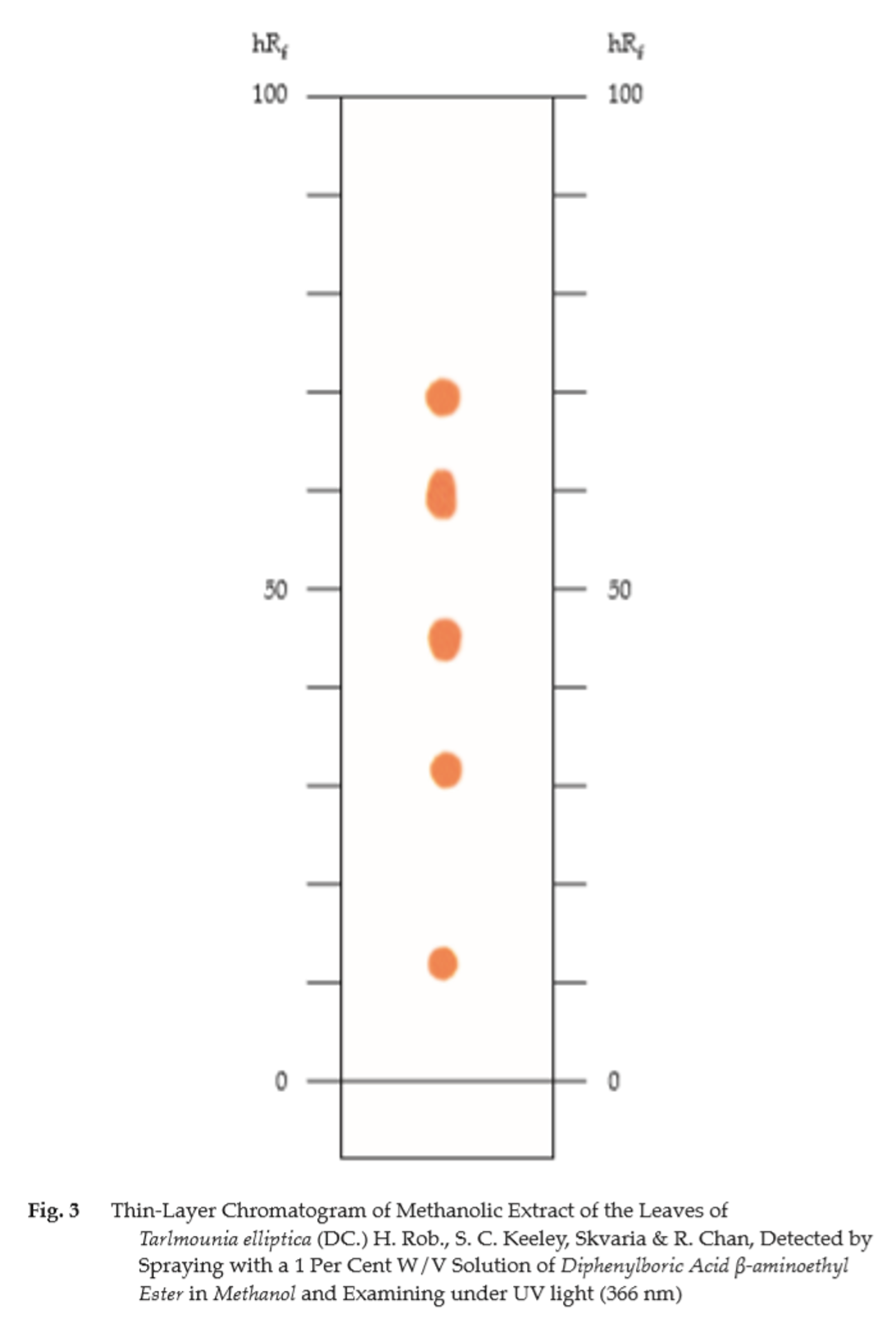ตำรามาตรฐานยาสมุนไพรไทย
Thai Herbal Pharmacopoeia
สำนักยาและวัตถุเสพติด กรมวิทยาศาสตร์การแพทย์ กระทรวงสาธารณสุข
Bureau of Drug and Narcotic, Department of Medical Sciences, Ministry of Public Health(Tinospora crispa (L.) Hook.f. & Thomson)
(Nelumbo nucifera Gaertn.)
(Centella asiatica (L.) Urb.)
(Centella Dry Extract)
(Centella Cream)
(Mesua ferrea L.)
(Piper sarmentosum Roxb.)
(Piper sarmentosum Roxb.)
(Pterocarpus santalinus L. f.)
(Santalum album L.)
(Senna tora (L.) Roxb.)
(Senna alata (L.) Roxb.)
(Senna Alata Tea)
(Piper retrofractum Vahl)
(Myristica fragrans Houtt)
(Andrographis paniculata (Burm. f.) Nees)
(Andrographis Capsules)
(Allium ascalonicum L.)
(Ocimum tenuiflorum L.)
(Curcuma longa L.)
(Turmeric Capsules)
(Turmeric Dry Extract)
(Turmeric Dry Extract Capsules)
(Arcangelisia flava (L.) Merr.)
(Curcuma sp.)
Harrisonia perforata (Blanco) Merr.
(Aristolochia pierrei Lecomte)
(Zingiber officinale Roscoe)
(Ginger Capsules)
(Ginger Tea)
(Cassia fistula L.)
(Nardostachys jatamansi (D. Don) DC.)
(Angelica sinensis (Oliv.) Diels)
Artemisia annua L.
(Ligusticum sinense Oliv. cv. Chuanxiong)
(Neopicrorhiza scrophulariiflora Pennell)
(Atractylodes lancea (Thunb.) DC.)
(Aucklandia lappa Decne)
(Terminalia chebula Retz.)
(Angelica dahurica (Hoffm.) Benth. & Hook. f. ex Franch. & Sav. var. dahurica)
(Kaempferia parviflora Wall. ex Baker)
(Hibiscus sabdariffa L.)
(Roselle Tea)
(Allium sativum L.)
(Zingiber zerumbet (L.) Sm.)
(Wurfbainia testacea (Ridl.) Škorničk.& A. D. Poulsen)
(Cannabis sativa L.)
(Myristica fragrans Houtt)
(Dracaena cochinchinensis (Lour.) S. C. Chen)
(Ficus racemosa L.)
(Hyptis suaveolens (L.) Poit.)
Clerodendrum indicum (L.) Kuntze
(Phyllanthus emblica L.)
(Citrus hystrix DC.)
(Citrus hystrix DC.)
(Areca catechu L.)
(Momordica charantia L.)
Moringa oleifera Lam.
(Aegle marmelos (L.) Corrêa)
(Solanum trilobatum L.)
(Morus alba L.)
Gynostemma pentaphyllum(Thunb.)
Makino
(Clinacanthus nutans (Burm. f.) Lindau)
(Cissus quadrangularis L.)
(Mimusops elengi L.)
(Zingiber montanum (J. König) Link. ex A. Dietr.)
(Piper betle L.)
(Capsicum annuum L.)
(Capsicum Oleoresin)
(Capsicum Gel)
(Piper nigrum L.)
(Piper nigrum L.)
(Eurycoma longifolia Jack)
(Thunbergia laurifolia Lindl.)
(Piper wallichii (Miq.) Hand.-Mazz.)
Senna garrettiana (Craib) H. S. Irwin & Barneby
(Terminalia bellirica (Gaertn.) Roxb.)
(Terminalia chebula Retz.)
(Caesalpinia bonduc (L.) H. Roxb.)
(Tarlmounia elliptica (DC.) H. Rob., S. C. Keeley, Skvaria & R. Chan)
(Hog Creeper Vine Dry Extract Capsiles)
(Hog Creeper Vine Dry Extract)
(Brachypterum scandens (Roxb.) Miq.)
(Lepidium sativum L.)
(Nigella sativa L.)
(Cuminum cyminum L.)
(Foeniculum vulgare Mill.)
(Plantago ovata Forssk.)
(Pimpinella anisum L.)
(Carum carvi L.)
(Anethum graveolens L.)
(Trachyspermum ammi (L.) Sprague)
Albizia procera (Roxb.) Benth.
(Acorus calamus L.)
(Tiliacora triandra (Colebr.) Diels)
Cyanthillium cinereum (L.) H. Rob.
(Orthosiphon aristatus (Blume) Miq.)
Murdannia loriformis (Hassk.) R. S. Rao & Kammathy
(Capparis micracantha DC.)
(Chrysopogon zizanioides (L.) Roberty)
(Cyperus rotundus L.)
(Cannabis sativa L.)
(Syzygium aromaticum (L.) Merr. & L. M. Perry)
(Boesenbergia rotunda (L.) Mansf.)
(Acanthus ebracteatus Vahl)
(Acanthus ilicifolius L.)
(Kaempferia galanga L.)
(Curcuma comosa Roxb.)
Betula alnoides Buch.-Ham. ex D. Don
Cannabis sativa L.
Carthamus tinctorius L
Mitragyna speciosa (Korth.) Havil
Mallotus repandus (Rottler) Müll. Arg
Azadirachta indica A. Juss. var. siamensis Valeton
Azadirachta indica A. Juss. var. siamensis Valeton
Punica granatum L.
Rhinacanthus nasutus (L.) Kurz
Baliospermum solanifolium (Burm.) Suresh
Curcuma aeruginosa Roxb
Boesenbergia kingii Mood & L. M. Prince
Senegalia rugata (Lam.) Britton & Rose
Acacia concinna (Willd.) DC.
Senegalia rugata (Lam.) Britton & Rose
Acacia concinna (Willd.) DC.
Senna alexandriana Mill. var. alexandriana
Cassia acutifolia Delile, Cassia angustifolia Vahl
Butea superba Roxb. ex Willd.
[Plaso superba (Roxb. ex Willd.) Kuntze, Rudolphia superba (Roxb. ex Willd.) Poir.
Pueraria candollei Graham
ex Benth. var. mirifica (Airy Shaw & Suvat.) Niyomdham
Streblus asper Lour.
Suregada multiflora (A. Juss.) Baill. (Gelonium
multiflorum A. Juss.
Tarlmounia Elliptica Leaf is the dried full-grown leaf of Tarlmounia elliptica (DC.) H. Rob., S. C. Keeley, Skvaria & R. Chan (Vernonia elliptica DC., V. elaeagnifolia DC.) (Family Compositae), Herbarium Specimen Number: DMSC 230, Crude Drug Number: DMSc 0558
Constituents Tarlmounia Elliptica Leaf contains glaucolides A and B and their acetates, along with lupeol, taraxasterol, sitosterol, and stigmasterol.
Description of the plant (Figs. 1a, 1b) Scandent shrub; branch slender with longitudinal ridge, densely silvery hairs. Leaves simple, alternate, ovate, obovate, elliptic or oblong, 6 to 10 cm long, 3 to 4.5 cm wide, apex acute or obtuse, base obtuse, margin entire or remotely serrate, coriaceous, upper surface glabrous, lower surface densely covered with silvery hairs; veins 7 to 9 pairs; petiole 2 to 10 mm long. Inflorescence paniculate, corymbose heads of 3- to 5-flowered, 10 to 40 cm long, at the end of branches or on upper axil of the leaves, flower-heads numerous, purple at first, becoming whitish on fading, sweet smelling; involucral bracts elliptic, 1 to 4 mm long, apex obtuse, shortly pubescent; calyx pappus; corolla-tube with 5-oblong toothed at the apex; stamens 5, anther sagittate at base; style divided into 2 branches. Fruit achene, terete, about 2 mm long, about 1 mm wide, terete, compressed, longitudinally ribbed, covered with light brown translucent glands, crowned by the pappus, 4 to 8 mm long, base pointed.
Description
Macroscopical (Fig. 1a) Dried leaves more or less crumpled, blade ovate, obovate, elliptic or oblong from 6 to 9 cm long, and 2 to 4 cm wide, coriaceous; upper surface pale greenish brown to greyish brown, lower surface pale greyish brown and showing prominent midrib; petiole 4 to 10 mm long.
Microscopical (Figs. 2a, 2b) Transverse section of the leaf shows upper epidermis, a single layer of cuticularized rectangular cells, with few uniseriate multicellular trichomes and multicellular glandular trichomes. Mesophyll consisting of a single- or double-layer palisade parenchyma, some containing a small rosette aggregate crystal of calcium oxalate and several layers of irregular-shaped spongy parenchyma rich in chloroplastids. Through this region scattered small vascular bundles. Lower epidermis, a single layer of rectangular cells, with multicellular glandular trichomes and numerous T-shaped nonglandular trichomes, each with one horizontal, tapering end cell on short, 1- to 2-celled stalk.
Transverse section through the midrib of lamina shows several layers of collenchyma underneath the epidermis, parenchyma and collateral vascular bundles.
In surface view, epidermides of upper and lower surfaces are polygonal cells, with much more anomocytic stomata in the lower epidermis than in the upper one.
Tarlmounia Elliptica Leaf in powder possesses the diagnostic microscopical characters of the unground drug.




Packaging and storage Tarlmounia Elliptica Leaf shall be kept in well-closed containers, protected from light, and stored in a dry place.
Identification
A. To 500 mg of the sample, in powder, add 2 mL of acetic anhydride, warm on a water- bath for about 2 minutes, shake, and filter. Slowly add 1 mL of sulfuric acid to the filtrate to form a layer: a brownish red ring forms at the zone of contact.
B. Carry out the test as described in the “Thin-Layer Chromatography” (Appendix 3.1), using silica gel G as the coating substance and a mixture of 70 volumes of hexane, 29 volumes of ethyl acetate and 1 volume of glacial acetic acid as the mobile phase. Apply to the plate, 10 μL of the test solution prepared by refluxing 500 mg to 1 g of the sample, in powder, with 10 mL of methanol on a water-bath for about 20 minutes and filtering. After removal of the plate, allow it to dry in air and spray with a 1 per cent w/v solution of diphenylboric acid β-aminoethyl ester in methanol. Examine the plate under ultraviolet light (366 nm); five orange spots appear (Table 1); see also Fig. 3.
Table 1 hRf Values of Components in Methanolic Extract of the leaves of Tarlmounia elliptica (DC.) H. Rob., S. C. Keeley, Skvaria & R. Chan
| Spot | hRf Value | Detection |
| 1 Per Cent W/V Solution of Diphenylboric Acid β-Aminoethyl Ester in Methanol and UV 366 |
||
| 1 2 3 4 5 |
6-7 22-28 33-39 45-55 55-66 |
orange orange orange orange orange |
Loss on drying Not more than 11.0 per cent w/w after drying at 105° to constant weight (Appendix 4.15).
Acid-insoluble ash Not more than 2.0 per cent w/w (Appendix 7.6).
Sulfated ash Not more than 20.0 per cent w/w (Appendix 5.3).
Ethanol-soluble extractive Not less than 5.0 per cent w/w (Appendix 7.12).
Water-soluble extractive Not less than 14.0 per cent w/w (Appendix 7.12).
Chloroform-soluble extractive Not less than 4.0 per cent w/w (Appendix 7.12H).
